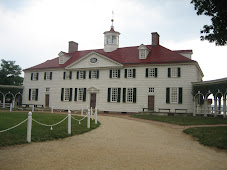 As a teacher, I feel most in control within the walls of my classroom. When I closed that door every morning, I am able to shut out all the criticisms, negativity and the failures of yesterday and execute my plans for a new day. Peter Senge's Schools That Learn covers the intricacies and complexities of the existing system of education but the portion that speaks to me the most is the about the classroom. There are powers to be that are simply beyond my control but my daily interactions with my students is where I can make a difference so that's where I will start my work.
As a teacher, I feel most in control within the walls of my classroom. When I closed that door every morning, I am able to shut out all the criticisms, negativity and the failures of yesterday and execute my plans for a new day. Peter Senge's Schools That Learn covers the intricacies and complexities of the existing system of education but the portion that speaks to me the most is the about the classroom. There are powers to be that are simply beyond my control but my daily interactions with my students is where I can make a difference so that's where I will start my work.Chapter III starts off with the design and creation of a learning classroom - what a concept! Imagine a classroom that is constantly evolving and causing students to be learning, thinking and productive interactions with or without a teacher standing in the front of the room (102). I was once told that the majority of a good teacher's work is outside the classroom during preparation and once class starts, the students are the ones hard at work! As I read on in the chapter, I find myself longing after the classroom described as "dynamic", "interactive", and most importantly "passionate".
Many of Carol Ann Kenerson's words (110-1116) echoed in my head as I considered my own classroom and the discrepancy between my ideals and the reality. I want to know "how". HOW do I transfer my passion of learning to my students? HOW do I foster intrinsic motivation and gear my students away from their obsession with grades? HOW do I train my students to look away from me and look to each other as contant resources? HOW do I overcome the challenges and resist the tendency to "revert to old ways and habits" (114)? HOW do I inspire?
Is there a cookbook for teaching? Although all my questions seem to have started with "how" - does any one have the secret one-size-fits-all recipe? If there really was a "HOW-TO" book out there, I doubt I will buy into any of it. Why not, you ask? Because my classroom is dynamic - the recipe is everchanging. So I've been asking the wrong questions...
Too many times, I've been driven by my curriculum and find myself teaching Social Studies rather than 12 year olds. Kenerson wrote, "A classroom is saturated with interests, desires and talents..." (111) I was so convicted by this sentence - in the name of "teaching", I am guilty of quenching these passions... the very passions that I vowed to foster! What an eye-opening realization... now I just need to fix it.
Lastly, I thought Kenerson's method of encouraging student interests was too idealistic at first, but brillant. She spoke about tapping into the students personal interests and talents and bring the old show-and-tell to a new level. Imagine a classroom full of teachers and learners alike and everyone's role changes every day... including mine.






